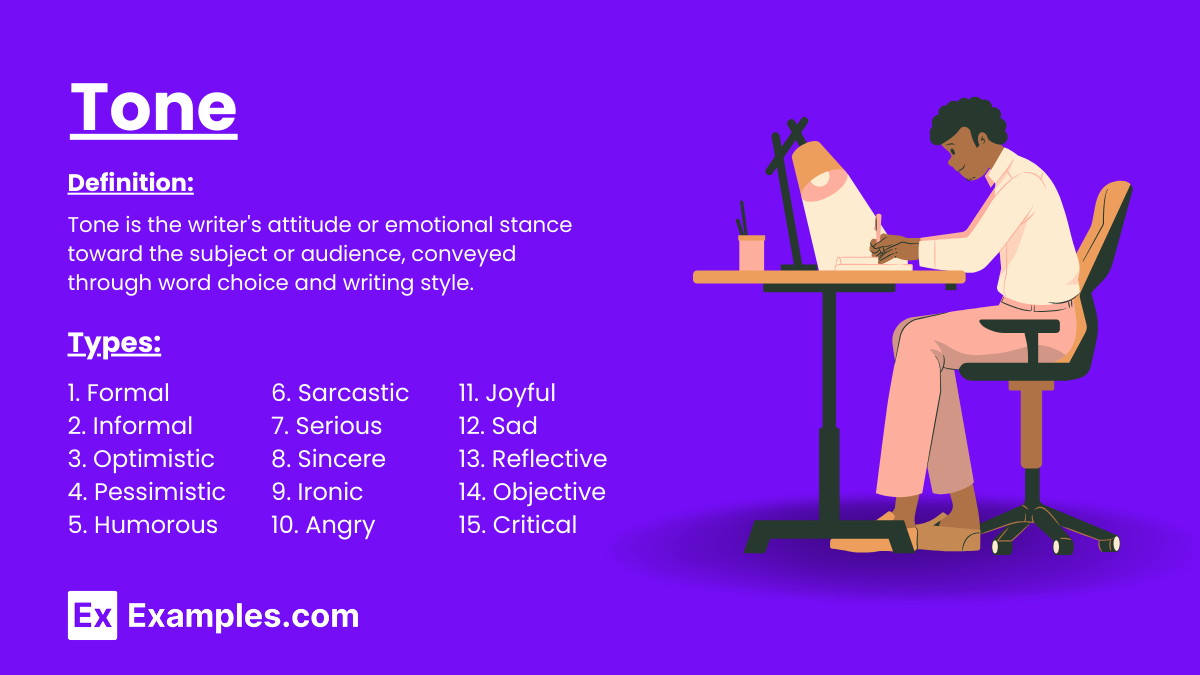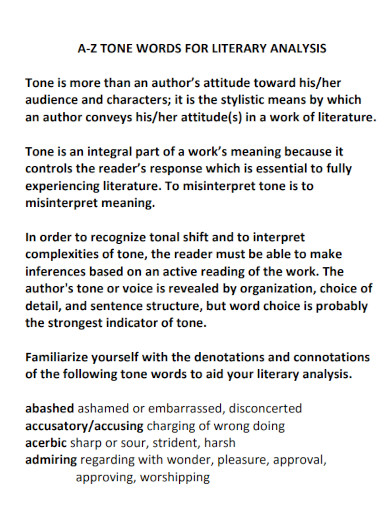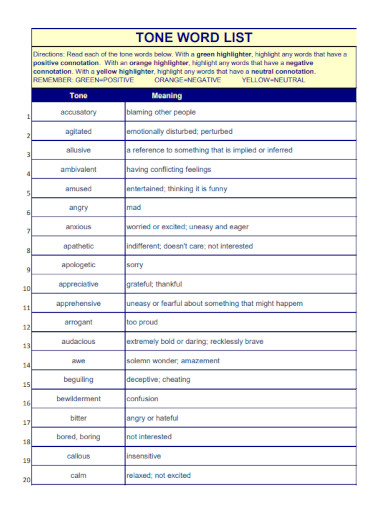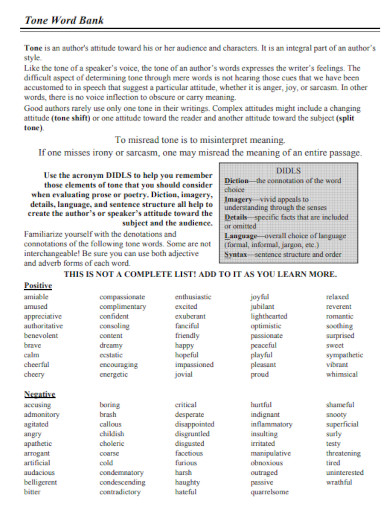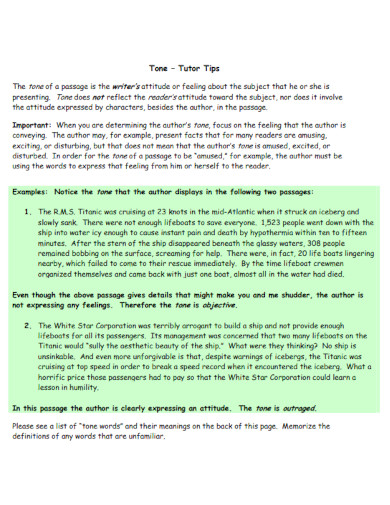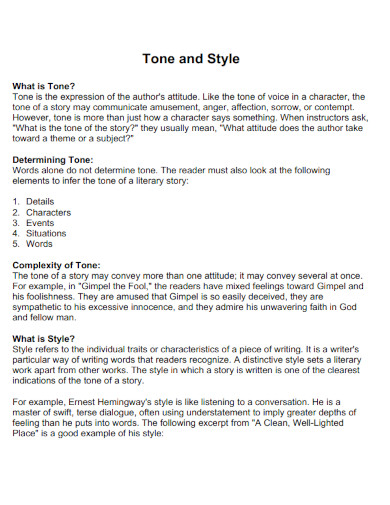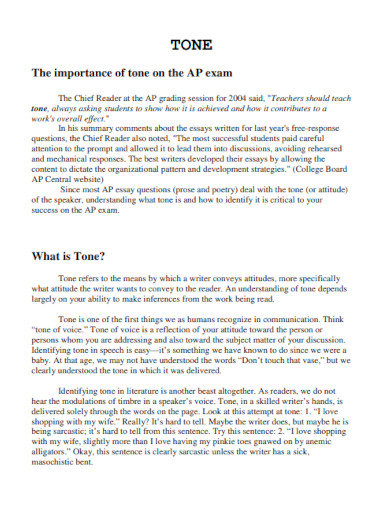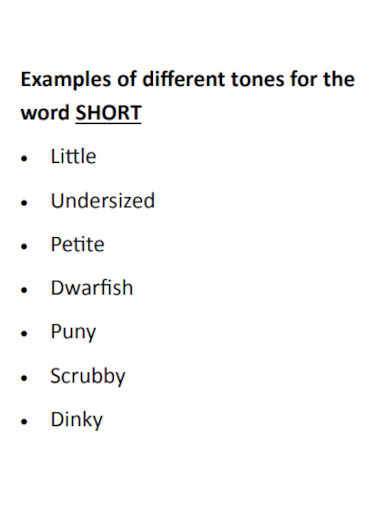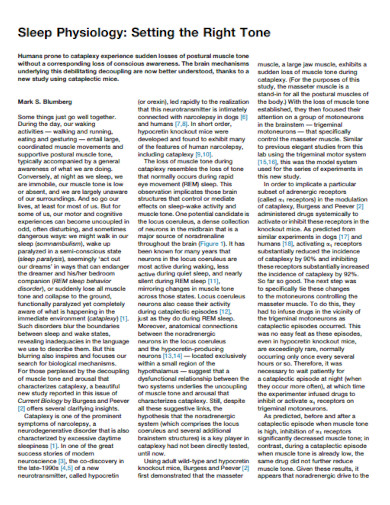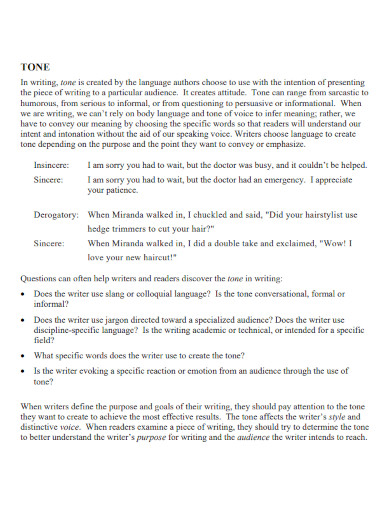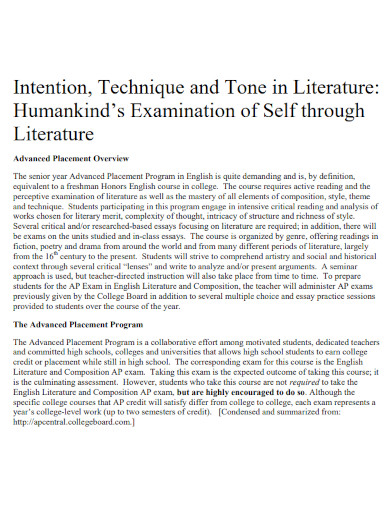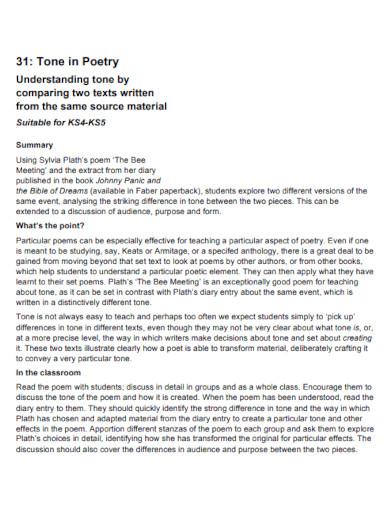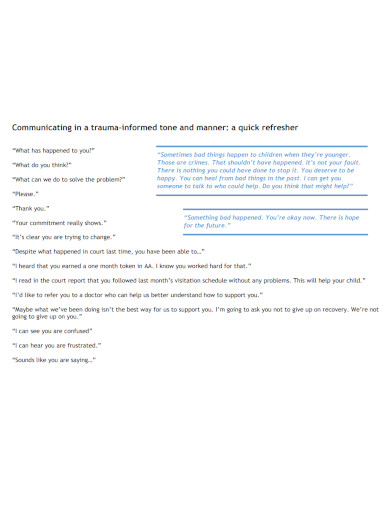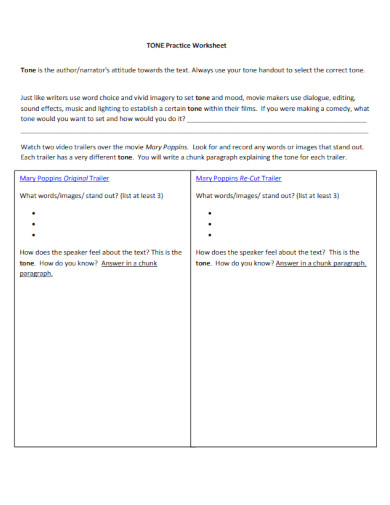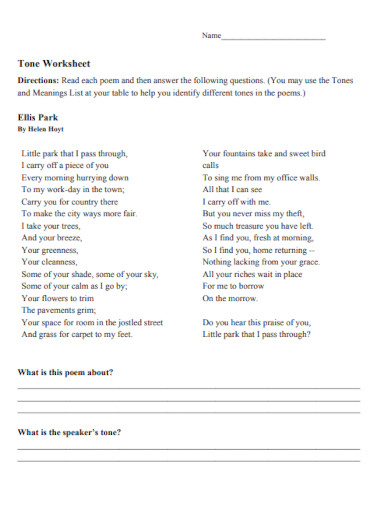70+ Tone Examples
Tone is the emotional flavor or attitude that an author imbues in their writing. It shapes how readers feel and react to the text. Through careful selection of words, sentence structure, and stylistic choices, tone can make a piece feel joyful, somber, sarcastic, or sincere. Understanding tone is crucial for fully grasping the nuances and underlying messages in any written work.
Overtone and undertone are concepts used as a way to describe the tone in a musical sense. Tones, when you use them properly, can affect the way your audience will feel when viewing or listening to your work. But tones can be easily used, once you have understood what they are and how to use them.
What is a Tone?
Tone refers to the writer’s attitude or emotional stance towards the subject or audience in a piece of writing. It is conveyed through word choice, sentence structure, and stylistic elements, affecting how readers perceive and interpret the message. Tone can be formal, informal, serious, playful, sarcastic, or any other attitude that expresses the writer’s perspective.
Types of Tone
Understanding the various types of tone can help readers and writers alike to better grasp the nuances of a text. Here are some common types of tone:
1. Formal
A formal tone is characterized by polite, respectful, and serious language. It is often used in academic, professional, or official documents.
2. Informal
An informal tone is casual and conversational. It uses colloquial language and contractions, making the writing feel more personal and relatable.
3. Optimistic
An optimistic tone conveys a positive outlook, highlighting hope, joy, and positivity. It encourages and uplifts the reader.
4. Pessimistic
In contrast, a pessimistic tone reflects a negative outlook, emphasizing despair, doubt, and disappointment. It often evokes a sense of hopelessness.
5. Humorous
A humorous tone is playful and entertaining. It aims to amuse the reader through wit, irony, or clever observations.
6. Sarcastic
Sarcasm is marked by a mocking or ironic tone. It often conveys contempt or disdain through exaggerated or contradictory statement.
7. Serious
A serious tone is earnest and thoughtful. It conveys importance and gravity, often used in discussions of significant or somber topics.
8. Sincere
A sincere tone is genuine and heartfelt. It reflects honesty and earnestness, making the message feel trustworthy and authentic.
9. Ironic
An ironic tone involves saying the opposite of what is meant, often for humorous or emphatic effect. It can highlight contradictions or absurdities.
10. Angry
An angry tone is intense and passionate, expressing strong displeasure or rage. It can be confrontational and forceful.
11. Joyful
A joyful tone is exuberant and cheerful. It conveys happiness and delight, spreading positivity to the reader.
12. Sad
A sad tone expresses sorrow and melancholy. It evokes empathy and compassion by highlighting pain or loss.
13. Reflective
A reflective tone is contemplative and introspective. It involves deep thinking and consideration, often exploring personal experiences or insights.
14. Objective
An objective tone is neutral and unbiased. It presents facts without emotion, allowing the reader to form their own opinions.
15. Critical
A critical tone analyzes and evaluates, often pointing out faults or shortcomings. It can be harsh or constructive, depending on the context.
Examples of Tone
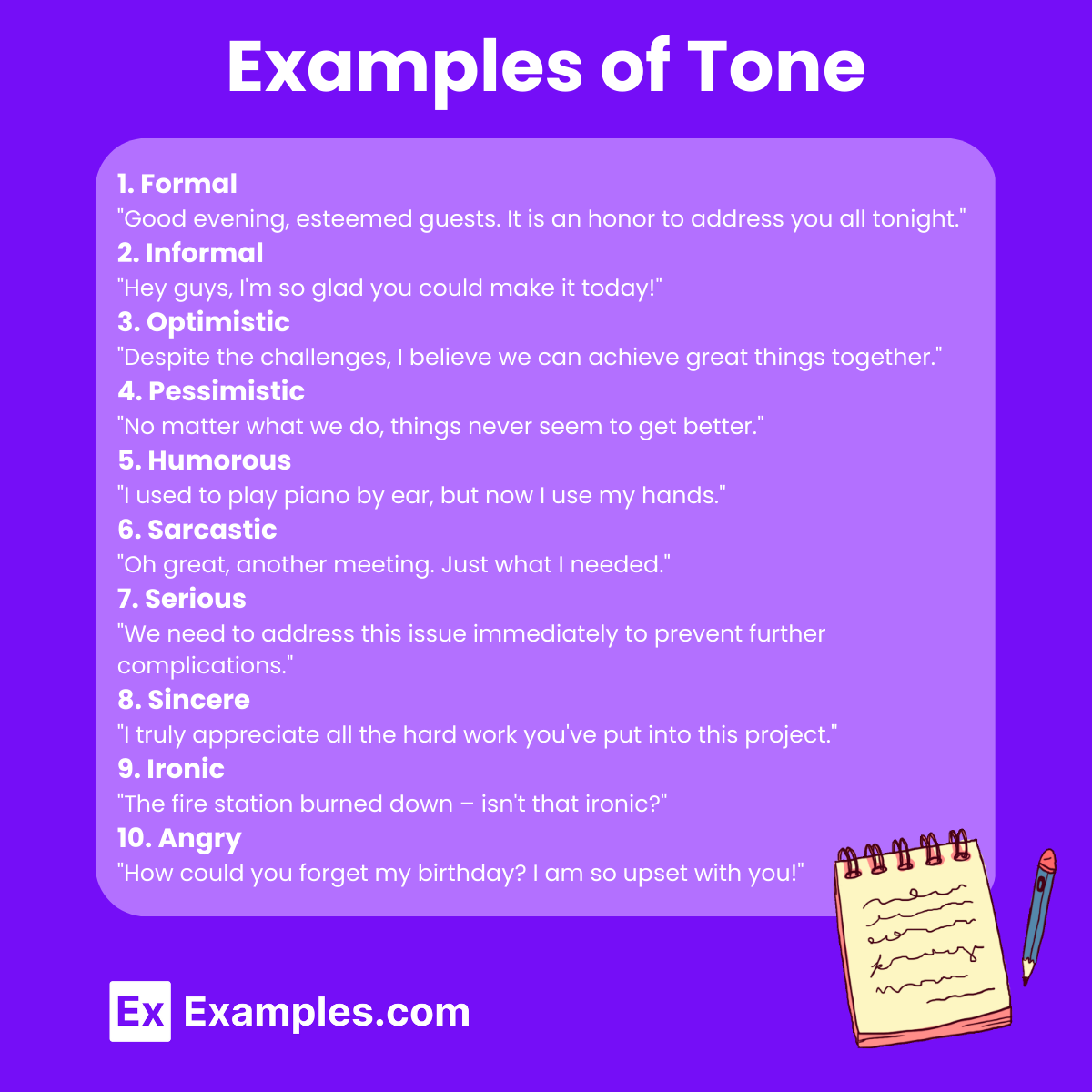
Tone Examples in Literature
Tone in literature refers to the author’s attitude or approach towards the subject matter or the audience. Here are some examples of tone in literature, each with a brief explanation and an example:
- Serious:
- Example: “1984” by George Orwell
- The tone is grave and somber, reflecting the dystopian society and the oppressive nature of the regime.
- Quote: “War is peace. Freedom is slavery. Ignorance is strength.”
- Humorous:
- Example: “The Hitchhiker’s Guide to the Galaxy” by Douglas Adams
- The tone is light-hearted and comedic, often using absurdity and wit to entertain the reader.
- Quote: “The ships hung in the sky in much the same way that bricks don’t.”
- Nostalgic:
- Example: “To Kill a Mockingbird” by Harper Lee
- The tone reflects a longing for the past, often with a sense of bittersweet remembrance.
- Quote: “Maycomb was an old town, but it was a tired old town when I first knew it.”
- Tragic:
- Example: “Romeo and Juliet” by William Shakespeare
- The tone is sorrowful and lamenting, emphasizing the tragic fate of the protagonists.
- Quote: “For never was a story of more woe than this of Juliet and her Romeo.”
- Optimistic:
- Example: “Anne of Green Gables” by L.M. Montgomery
- The tone is hopeful and positive, reflecting the protagonist’s cheerful outlook on life.
- Quote: “Isn’t it nice to think that tomorrow is a new day with no mistakes in it yet?”
- Pessimistic:
- Example: “The Road” by Cormac McCarthy
- The tone is bleak and despondent, mirroring the harsh, post-apocalyptic world.
- Quote: “He walked out in the gray light and stood and he saw for a brief moment the absolute truth of the world.”
- Sarcastic:
- Example: “Pride and Prejudice” by Jane Austen
- The tone is mocking and ironic, often used to critique societal norms and behaviors.
- Quote: “It is a truth universally acknowledged, that a single man in possession of a good fortune, must be in want of a wife.”
- Reflective:
- Example: “The Great Gatsby” by F. Scott Fitzgerald
- The tone is contemplative and introspective, considering the deeper meanings and implications of events.
- Quote: “So we beat on, boats against the current, borne back ceaselessly into the past.”
- Melancholic:
- Example: “The Catcher in the Rye” by J.D. Salinger
- The tone is sad and pensive, reflecting the protagonist’s feelings of alienation and disillusionment.
- Quote: “Don’t ever tell anybody anything. If you do, you start missing everybody.”
- Joyful:
- Example: “Little Women” by Louisa May Alcott
- The tone is cheerful and exuberant, celebrating the warmth and happiness of family life.
- Quote: “Christmas won’t be Christmas without any presents.”
Tone Examples Sentences
Tone in writing reflects the author’s attitude toward the subject matter or the audience. Here are some examples of sentences with different tones:
- Serious:
- “The decision to send troops into the conflict zone was not made lightly, and it carries grave consequences for all involved.”
- Humorous:
- “She walked into the room, tripped over her own feet, and declared, ‘Graceful as always!'”
- Nostalgic:
- “I remember those summer days at the lake, the sun setting in a golden haze as we laughed and played without a care in the world.”
- Tragic:
- “As the storm raged on, they realized their hope of rescue was fading, leaving them with nothing but despair.”
- Optimistic:
- “No matter how dark the night, the dawn will always break, bringing with it new opportunities and hope.”
- Pessimistic:
- “Every attempt seemed futile, and he couldn’t shake the feeling that nothing would ever go right again.”
- Sarcastic:
- “Oh, great. Another meeting that could have been an email. Just what I needed today.”
- Reflective:
- “As she sat by the window, watching the rain, she pondered the choices that had led her to this moment.”
- Melancholic:
- “The empty house echoed with memories of laughter and joy, now replaced by an unbearable silence.”
- Joyful:
- “The children ran through the fields, their laughter ringing out like music on a perfect summer’s day.”
Tone Examples in Poetry
Tone in poetry reflects the poet’s attitude toward the subject or the audience. Here are some examples of different tones in poetry, each with a brief explanation and an excerpt illustrating that tone:
- Serious:
- Example: “Ozymandias” by Percy Bysshe Shelley
- Excerpt: “Look on my Works, ye Mighty, and despair!”
- The serious tone underscores the themes of human pride and the inevitable decay of empires.
- Humorous:
- Example: “This Is Just to Say” by William Carlos Williams
- Excerpt: “I have eaten the plums that were in the icebox”
- The humorous tone is light-hearted and playful, capturing a mundane yet amusing moment.
- Nostalgic:
- Example: “Fern Hill” by Dylan Thomas
- Excerpt: “Now as I was young and easy under the apple boughs”
- The nostalgic tone reflects longing for the innocence and simplicity of childhood.
- Tragic:
- Example: “Annabel Lee” by Edgar Allan Poe
- Excerpt: “But we loved with a love that was more than love— / I and my Annabel Lee—”
- The tragic tone conveys deep sorrow and loss over the death of a loved one.
- Optimistic:
- Example: “I Wandered Lonely as a Cloud” by William Wordsworth
- Excerpt: “And then my heart with pleasure fills, / And dances with the daffodils.”
- The optimistic tone celebrates the joy and beauty found in nature.
- Pessimistic:
- Example: “The Waste Land” by T.S. Eliot
- Excerpt: “April is the cruellest month, breeding / Lilacs out of the dead land,”
- The pessimistic tone reflects disillusionment and despair in a post-war world.
- Sarcastic:
- Example: “The Unknown Citizen” by W.H. Auden
- Excerpt: “He was found by the Bureau of Statistics to be / One against whom there was no official complaint,”
- The sarcastic tone critiques the depersonalization of individuals by bureaucratic systems.
- Reflective:
- Example: “Stopping by Woods on a Snowy Evening” by Robert Frost
- Excerpt: “The woods are lovely, dark and deep, / But I have promises to keep,”
- The reflective tone contemplates the beauty of nature and the responsibilities of life.
- Melancholic:
- Example: “Dover Beach” by Matthew Arnold
- Excerpt: “The eternal note of sadness in.”
- The melancholic tone conveys a sense of deep sorrow and the fragility of human happiness.
- Joyful:
- Example: “Ode to Joy” by Friedrich Schiller
- Excerpt: “Joy, beautiful spark of the gods, / Daughter of Elysium,”
- The joyful tone celebrates the transcendent power of joy and human connection.
Tone Examples in Writing
Tone in writing reflects the author’s attitude toward the subject matter or the audience. Here are some examples of different tones in writing, each with a brief explanation and an example sentence:
- Serious:
- The tone is grave and reflects importance.
- Example: “The consequences of climate change are far-reaching and require immediate action from all global leaders.”
- Humorous:
- The tone is light-hearted and meant to entertain.
- Example: “I told my computer I needed a break, and now it won’t stop sending me vacation ads.”
- Nostalgic:
- The tone reflects longing for the past.
- Example: “Every summer, we would visit my grandparents’ farm, where time seemed to stand still and the days were filled with endless adventure.”
- Tragic:
- The tone conveys deep sorrow and despair.
- Example: “The once-vibrant town lay in ruins, a stark reminder of the devastating war that had ravaged it.”
- Optimistic:
- The tone is hopeful and positive.
- Example: “Despite the challenges ahead, I believe we have the strength and resilience to create a brighter future.”
- Pessimistic:
- The tone reflects a negative outlook.
- Example: “No matter how hard we try, it seems like nothing ever changes for the better.”
- Sarcastic:
- The tone is mocking and often uses irony.
- Example: “Oh great, another meeting that could have been an email. Just what I needed today.”
- Reflective:
- The tone is thoughtful and contemplative.
- Example: “As I sat by the window, watching the rain, I couldn’t help but ponder the choices that had led me to this moment.”
- Melancholic:
- The tone is sad and pensive.
- Example: “The empty house echoed with memories of laughter and joy, now replaced by an unbearable silence.”
- Joyful:
- The tone is cheerful and exuberant.
- Example: “The children ran through the fields, their laughter ringing out like music on a perfect summer’s day.”
Tone Examples in Movies
Tone in movies is conveyed through dialogue, cinematography, music, and overall atmosphere. Here are some examples of different tones in movies, each with a brief explanation and an example film:
- Serious:
- The tone is grave and reflects importance.
- Example: “Schindler’s List” (1993)
- The film’s serious tone captures the harrowing reality of the Holocaust and the profound moral struggles of its characters.
- Humorous:
- The tone is light-hearted and meant to entertain.
- Example: “The Grand Budapest Hotel” (2014)
- The film uses witty dialogue, quirky characters, and comedic situations to create a humorous and whimsical tone.
- Nostalgic:
- The tone reflects longing for the past.
- Example: “Midnight in Paris” (2011)
- The film’s nostalgic tone highlights the romantic allure of 1920s Paris and the protagonist’s longing for a bygone era.
- Tragic:
- The tone conveys deep sorrow and despair.
- Example: “Requiem for a Dream” (2000)
- The film’s tragic tone underscores the devastating consequences of addiction on its characters.
- Optimistic:
- The tone is hopeful and positive.
- Example: “The Pursuit of Happyness” (2006)
- The film’s optimistic tone is reflected in the protagonist’s unwavering determination and ultimate triumph over adversity.
- Pessimistic:
- The tone reflects a negative outlook.
- Example: “Blade Runner” (1982)
- The film’s pessimistic tone portrays a bleak and dystopian future, questioning the nature of humanity and technology.
- Sarcastic:
- The tone is mocking and often uses irony.
- Example: “Deadpool” (2016)
- The film’s sarcastic tone is evident in the protagonist’s irreverent humor and frequent breaking of the fourth wall.
- Reflective:
- The tone is thoughtful and contemplative.
- Example: “Eternal Sunshine of the Spotless Mind” (2004)
- The film’s reflective tone explores themes of memory, love, and loss through a poignant and introspective narrative.
- Melancholic:
- The tone is sad and pensive.
- Example: “Lost in Translation” (2003)
- The film’s melancholic tone captures the loneliness and disconnection of its characters in a foreign city.
- Joyful:
- The tone is cheerful and exuberant.
- Example: “La La Land” (2016)
- The film’s joyful tone is conveyed through its vibrant musical numbers and the infectious enthusiasm of its protagonists.
Tone Examples for Sad
Sad tone in writing or speech conveys feelings of sorrow, melancholy, or regret. Here are some examples of sentences with a sad tone:
- “As she looked at the empty chair at the dinner table, she couldn’t help but feel a pang of sorrow for the loved one who was no longer there.”
- This sentence conveys the emptiness and longing for someone who has passed away.
- “He walked through the deserted streets of his hometown, now just a shadow of the vibrant place it used to be, feeling a deep sense of loss.”
- The sentence reflects the desolation and change, evoking a sense of nostalgia and sadness.
- “The old photo album brought tears to her eyes as she remembered the happier times now lost to the past.”
- The use of “tears” and “happier times” emphasizes the melancholy and nostalgia.
- “Every morning, he wakes up to an empty bed, the loneliness pressing down on him like a weight he can’t lift.”
- This sentence conveys a profound sense of loneliness and sorrow.
- “The once bustling playground was now silent, the laughter of children replaced by the eerie stillness of abandonment.”
- The contrast between past joy and present silence highlights the sad tone.
- “She reread the goodbye letter for the hundredth time, each word a painful reminder of the love she had lost.”
- The act of rereading the letter emphasizes the lingering pain and regret.
- “As the final notes of the song played, he felt a tear slide down his cheek, remembering the person who had always danced to that tune with him.”
- The memory of a shared moment now tinged with grief conveys the sadness.
- “The old house creaked with memories of a family long gone, each room echoing with the ghosts of the past.”
- The imagery of an empty house filled with memories evokes a deep sense of loss.
- “Watching the sunset alone, she felt a profound sadness, knowing that another day had ended without him by her side.”
- The setting of a sunset alone underscores the feeling of loneliness and longing.
- “He stared at the faded picture, the faces smiling back at him from a time when everything was right, and felt an overwhelming sense of grief.”
- The faded picture and the mention of everything being “right” in the past contrast with the present sadness.
Tone Examples Negative
Negative tone in writing or speech conveys feelings of disapproval, pessimism, frustration, or resentment. Here are some examples of sentences with a negative tone:
- “I can’t believe you forgot my birthday again. It’s like you don’t even care.”
- This sentence conveys frustration and disappointment.
- “Everything in this place is falling apart, and nobody seems to want to fix it.”
- The tone reflects dissatisfaction and hopelessness.
- “Why do you always have to be so difficult? It’s exhausting dealing with you.”
- The sentence shows irritation and resentment.
- “The meeting was a complete waste of time; nothing productive ever comes out of these sessions.”
- The tone is dismissive and critical.
- “I’m so tired of your excuses. You never take responsibility for anything.”
- The sentence conveys frustration and blame.
- “This project is doomed to fail. We’ve made too many mistakes already.”
- The tone is pessimistic and defeatist.
- “I can’t stand how you always interrupt me. It’s incredibly rude and disrespectful.”
- The sentence expresses annoyance and anger.
- “Why do I even bother trying? No one appreciates my efforts anyway.”
- The tone reflects feelings of futility and resentment.
- “This room is a mess. Do you ever clean up after yourself?”
- The sentence conveys irritation and disapproval.
- “I don’t trust him. He’s always been dishonest and unreliable.”
- The tone is distrustful and accusatory.
Tone Examples in Songs
Tone in songs can vary widely, reflecting different emotions and attitudes. Here are ten examples of different tones in songs, each with a brief explanation and a relevant song:
- Serious:
- Example: “Imagine” by John Lennon
- The song has a serious tone as it addresses deep and hopeful visions for world peace and unity.
- Lyric: “Imagine all the people living life in peace.”
- Humorous:
- Example: “Happy” by Pharrell Williams
- The song’s playful and upbeat tone is meant to uplift and bring joy to listeners.
- Lyric: “Clap along if you feel like a room without a roof.”
- Nostalgic:
- Example: “Summer of ’69” by Bryan Adams
- The song reflects on the past with a sense of longing and fond memories.
- Lyric: “Those were the best days of my life.”
- Tragic:
- Example: “Tears in Heaven” by Eric Clapton
- The song has a deeply sorrowful tone as Clapton mourns the loss of his son.
- Lyric: “Would it be the same if I saw you in heaven?”
- Optimistic:
- Example: “Here Comes the Sun” by The Beatles
- The song has an optimistic and hopeful tone, celebrating the arrival of better days.
- Lyric: “Here comes the sun, and I say, it’s all right.”
- Pessimistic:
- Example: “Hurt” by Nine Inch Nails (also covered by Johnny Cash)
- The song expresses a deeply pessimistic and despairing tone about pain and regret.
- Lyric: “Everyone I know goes away in the end.”
- Sarcastic:
- Example: “Ironic” by Alanis Morissette
- The song uses a sarcastic tone to highlight life’s ironic situations.
- Lyric: “It’s like rain on your wedding day.”
- Reflective:
- Example: “The Times They Are A-Changin'” by Bob Dylan
- The song has a reflective tone, contemplating social change and its impacts.
- Lyric: “For the times they are a-changin’.”
- Melancholic:
- Example: “Someone Like You” by Adele
- The song carries a melancholic tone as it deals with the pain of lost love.
- Lyric: “Never mind, I’ll find someone like you.”
- Joyful:
- Example: “Walking on Sunshine” by Katrina and the Waves
- The song has a joyful and exuberant tone, expressing pure happiness.
- Lyric: “I’m walking on sunshine, and don’t it feel good!”
More Tone Samples & Templates
1. A to Z Tone Words
2. Tone Word List
3. Tone Word Bank
4. Tone Sample
5. Tone and Style
6. Tone PDF
7. Short Tone
8. Setting the Right Tone
9. Tone Example
10. Tone in Literature
11. Tone in Poetry PDF
12. Tone List
13. Tone Format
14. Tone Practice Worksheet
15. Tone Worksheet
Importance of Tone
Tone is a critical element in writing that significantly influences how a reader perceives and engages with the text. Here are some reasons why tone is important:
1. Conveys Emotion
Tone communicates the writer’s emotional state or attitude towards the subject, helping to evoke corresponding emotions in the reader. Whether it’s joy, sadness, anger, or fear, the tone sets the emotional backdrop for the narrative.
2. Establishes Connection
Tone helps establish a connection between the writer and the reader. A conversational tone can make the reader feel directly addressed and engaged, while a formal tone can create a sense of distance and authority.
3. Reveals Perspective
The tone of a piece of writing reveals the writer’s perspective or viewpoint. This can be crucial in understanding the underlying message or theme of the text. For example, a critical tone may indicate disapproval, while a celebratory tone suggests admiration.
4. Guides Reader Interpretation
Tone guides how the reader interprets the content. The same facts can be presented in different tones to elicit different reactions. For example, an ironic tone can make a statement seem sarcastic, while a straightforward tone makes it seem sincere.
5. Enhances Characterization
In literature, tone can enhance characterization by reflecting the personalities and emotions of characters. A character’s dialogue or internal monologue often carries a specific tone that helps the reader understand their nature and motivations.
6. Sets the Mood
Tone helps set the overall mood or atmosphere of a piece of writing. A spooky tone creates a sense of suspense and fear, while a cheerful tone creates a light-hearted and joyful mood.
7. Aids in Pacing
The tone can influence the pacing of a narrative. A tense, urgent tone can quicken the pace and create a sense of immediacy, while a relaxed tone can slow down the narrative, allowing for more detailed descriptions and reflections.
8. Supports Theme Development
Tone supports the development of the theme by reinforcing the central ideas and messages of the text. For instance, a solemn tone can underscore themes of loss and grief, while an enthusiastic tone can highlight themes of adventure and discovery.
9. Enhances Authenticity
A consistent and appropriate tone enhances the authenticity and credibility of the writing. It ensures that the writer’s voice is genuine and aligns with the subject matter and audience expectations.
10. Influences Reader’s Response
Ultimately, tone influences the reader’s response and reaction to the text. It can persuade, entertain, inform, or provoke thought, making it a powerful tool in the writer’s arsenal.
Tone vs. Mood
| Aspect | Tone | Mood |
|---|---|---|
| Definition | The writer’s attitude towards the subject or audience. | The overall feeling or atmosphere that a piece of writing creates for the reader. |
| Purpose | To convey the author’s perspective and feelings. | To evoke specific emotions in the reader. |
| Determined by | Word choice, sentence structure, and stylistic elements. | Setting, imagery, and descriptive language. |
| Examples | Sarcastic, formal, informal, optimistic, serious. | Joyful, eerie, melancholic, suspenseful, calm. |
| Function | Influences how the reader perceives the writer’s attitude and viewpoint. | Shapes the reader’s emotional experience and reaction to the text. |
| Focus | Author’s voice and perspective. | Reader’s emotional response. |
| Changeability | Can change throughout the text as the author’s attitude shifts. | Can also change, but usually remains consistent to support the narrative’s atmosphere. |
| Expression | Directly expressed through the writer’s style and choice of language. | Indirectly created through the environment, setting, and sensory details. |
| Example Sentence | “The teacher’s tone was stern as she explained the rules.” | “The mood in the haunted house was terrifying, with every creak and shadow adding to the suspense.” |
Synonyms & Antonyms For Tone
| Synonyms | Antonyms |
|---|---|
| Attitude | Insincerity |
| Manner | Apathy |
| Style | Disregard |
| Voice | Indifference |
| Inflection | Unconcern |
| Timbre | Detachment |
| Diction | Flatness |
| Modulation | Monotony |
| Expression | Emptiness |
| Resonance | Inexpressiveness |
| Pitch | Blandness |
| Emphasis | Lack of emotion |
| Sentiment | Neutrality |
| Cadence | Inconsistency |
| Nuance | Ambiguity |
How to use the right tone
How to use a Tone as a Literary Device
There are many types of tones in Literature that can be used to set your attitude in writing. Some examples of the types of tones are called, formal, informal, happy or optimistic, assertive, etc. You can easily set the tone of your writing by inserting specific words or phrases into your writing.
1.) Selecting or Choosing a Tone to Use
First, you must select what type of tone you want to use in your writing. Do some research on what type of tone you want to use and what the specific tone does to your writing. You must also keep this tone in mind when you are writing, to do this it is best to either write down the specific tone and its description on a document or a piece of paper that is within arms reach.
2.) Adopting Specific Structure in Your Tone
After you have selected your tone, do some research on how this tone should be structured and what types of words can help push this tone onto your writing. You can write down onto your reference specific words, phrases, and keywords that you can use to enhance your tone.
3.) Inserting Specific Statements or Words in Your Writing
It is not enough that you will insert specific words, phrases, and keywords into the body of your work. Strategic placement of these words can significantly improve the tone, structure, and readability of your work. As a general rule of thumb, it is best if you do not use the same words over and over again to push the tone.
4.) Maintaining the Tone
You have to maintain your tone throughout your work because an unclear tone can miscommunicate the emotions the writer wants to convey.
What is tone in writing?
Tone refers to the writer’s attitude or emotional stance towards the subject or audience, conveyed through word choice, sentence structure, and style.
How does tone differ from mood?
Tone is the writer’s attitude, while mood is the overall emotional atmosphere created for the reader.
Why is tone important in writing?
Tone shapes readers’ perceptions, influences their emotional response, and helps convey the writer’s perspective and intent.
How can a writer establish tone?
Writers establish tone through word choice, sentence structure, punctuation, and stylistic elements.
Can tone change within a text?
Yes, the tone can change to reflect shifts in the writer’s attitude or the narrative’s direction.
What are common types of tone?
Common types include formal, informal, serious, humorous, sarcastic, optimistic, pessimistic, and sincere.
How does tone affect the reader?
Tone influences how readers perceive the text and their emotional reaction to it.
Can tone be misinterpreted?
Yes, tone can be misinterpreted if readers do not pick up on the writer’s cues or context.
What is the difference between tone and voice?
Tone is the attitude expressed, while voice is the unique style and personality of the writer.
How can I identify the tone in a text?
Look for cues in word choice, sentence structure, punctuation, and the overall writing style to identify the tone.



